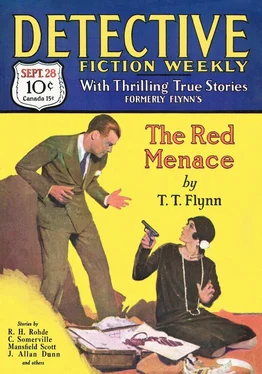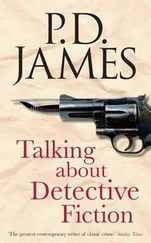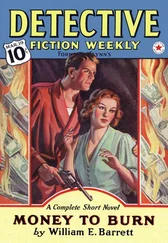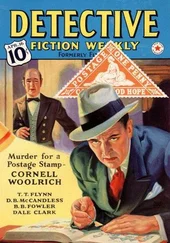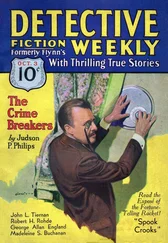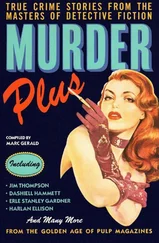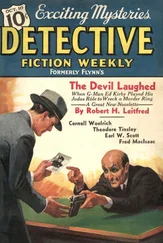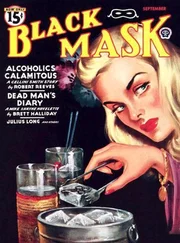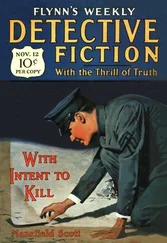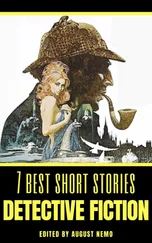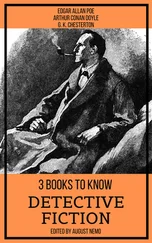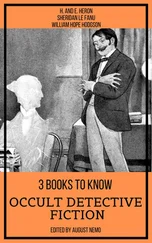Джон Данн - Detective Fiction Weekly. Vol. 44, No. 5, September 28, 1929
Здесь есть возможность читать онлайн «Джон Данн - Detective Fiction Weekly. Vol. 44, No. 5, September 28, 1929» весь текст электронной книги совершенно бесплатно (целиком полную версию без сокращений). В некоторых случаях можно слушать аудио, скачать через торрент в формате fb2 и присутствует краткое содержание. Город: New York, Год выпуска: 1929, Издательство: Red Star News Company, Жанр: Детектив, на английском языке. Описание произведения, (предисловие) а так же отзывы посетителей доступны на портале библиотеки ЛибКат.
- Название:Detective Fiction Weekly. Vol. 44, No. 5, September 28, 1929
- Автор:
- Издательство:Red Star News Company
- Жанр:
- Год:1929
- Город:New York
- ISBN:нет данных
- Рейтинг книги:4 / 5. Голосов: 1
-
Избранное:Добавить в избранное
- Отзывы:
-
Ваша оценка:
- 80
- 1
- 2
- 3
- 4
- 5
Detective Fiction Weekly. Vol. 44, No. 5, September 28, 1929: краткое содержание, описание и аннотация
Предлагаем к чтению аннотацию, описание, краткое содержание или предисловие (зависит от того, что написал сам автор книги «Detective Fiction Weekly. Vol. 44, No. 5, September 28, 1929»). Если вы не нашли необходимую информацию о книге — напишите в комментариях, мы постараемся отыскать её.
Detective Fiction Weekly. Vol. 44, No. 5, September 28, 1929 — читать онлайн бесплатно полную книгу (весь текст) целиком
Ниже представлен текст книги, разбитый по страницам. Система сохранения места последней прочитанной страницы, позволяет с удобством читать онлайн бесплатно книгу «Detective Fiction Weekly. Vol. 44, No. 5, September 28, 1929», без необходимости каждый раз заново искать на чём Вы остановились. Поставьте закладку, и сможете в любой момент перейти на страницу, на которой закончили чтение.
Интервал:
Закладка:
Hawley didn’t hear that. Already he was sitting on a straw mat on the steps of No. 38, holding hands with Mary.
“Luck!” he exulted. “To-morrow I go into the detective bureau as a second grade sergeant. Pop Gregory says so, and he never breaks his word. Know what it means, Mary? A jump of a thousand a year! Now I can say the word!”
The girl’s eyes were starry.
“Why didn’t you say it a long time ago, Jim?” she wanted to know. “Ain’t I — working?”
Liverpool Jack
by Charles Somerville
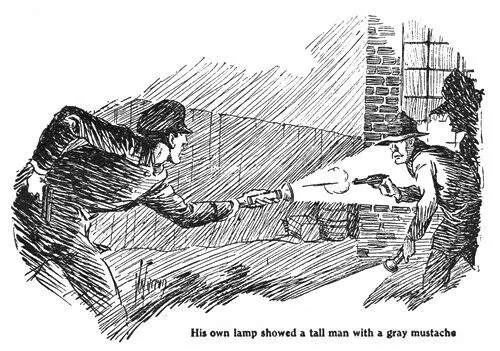
When the Two Best Sleuths of the Tenderloin Go to Public School the Underworld Learns a Thing or Two
If there were ever two vexed, irritated, bothered, worried and chagrined man-hunters they were Detectives Ed Burgess and John Fitzpatrick of the New York force on a certain night back in 1912!
These two were, at the time, the star sleuths of the branch bureau of headquarters established at the West Forty-Seventh Street station, in the heart of New York’s new “Tenderloin” district, known also as the Great White Way and the “Roaring Forties.” It draws vast crowds from all over the nation and from all over the world — people with lots of money in their pockets, lots of jewelry on their persons. It becomes, therefore, a Mecca for all the experts of crookdom. A detective in that district has his work cut out for him working his wits against the razor-edged ingenuities of the fastest criminal performers on earth.
Working together, Burgess and Fitzpatrick had achieved an imposing record for difficult cases well handled. They had solved several very knotty mysteries and bagged many dangerous criminals. They had sent the vicious “One-Eye” Lynch, otherwise known as “The Eel,” to the electric chair after long and implacable pursuit. They had taken the million-dollar thief of the American Bank Note Company affair. They successfully laid the mysterious crime of the murder of the West Side philanthropist saloonkeeper, “Paddy the Priest” at the door of “Happy Jack” Halloran, and sent him to the chair for it. They had pursued the youthful thug and plunderer known as “The Crusher,” and closed the bars of prison upon him for a long stretch of years. They had landed “Stutters,” a wizard at burglary, notorious “dinner” and “theater” thief, who pillaged the homes of wealthy New Yorkers of more than a quarter of a million dollars before Burgess and Fitzpatrick got a chance at him. They had raided and routed the thieves’ resort of “Scush” Thomas, fence and gunman, who himself was in the end “taken for a ride” in New Jersey by fellow desperadoes. On the tiny clew offered by the scratch on the side of a stolen gem they had stopped an up-State society woman in the beginning of a career as a jewel thief.
But the Law, in its pursuit of malefactors, frequently gets some hard bumps itself.
Burgess and Fitzpatrick had been long organizing a corps of tipsters, or “stool pigeons,” working underground in the underworld. All detectives must establish such liaisons with the secret lanes, byways and resorts of crime if they are to be successful in their careers. These two detectives had displayed fine tact and ingenuity in playing one crook off on another while maintaining friendly and confidential relations with both. Important as had been many of their captures after the commissions of crimes, even more important had been their ability to nip numerous criminal projects in the bud.
And it was when bent on such a task that from one of their secret sources of information came news of an impressively dangerous mating up of three certain criminals for the purpose of bank robberies by safe breaking.
“Bugs” Reilly, they learned, was one of them. But Bugs was the smallest of the game. He was little more than a stripling in years. He was no “touch system” adept, or expert in the use of the explosives employed in the crashing of the heavy steel doors of bank vaults and safes. Bugs would rank as not much more than a “lobbiegow,” an errand runner, a lookout on the job during its performance and a “toter of the tools.”
But another member of the combination was to be “Connecticut Blackie” Blake. That was very different. Very. Blackie had done several prison stretches to be sure, but he had left a trail of smashed bank vaults from the Atlantic to the Pacific, and from Canada to Mexico, and even in Mexico itself. He was a yogi among yeggs. Expert, daring, reckless in the use of gat or rod when cornered.
Big game as Blackie Blake was, bigger yet, however, would be the capture of the third member of the mob, if it might only be achieved. This would be the leader beyond doubt — the master mind truly. To bag Liverpool Jack Walsh wouldn’t be merely a feather in a cop’s cap — it would be a plume, and a red one at that.
For Liverpool Jack had a reputation as a highly skilled safe-breaker that was world-wide. The very neatness and precision and swiftness with which he handled his steel tools and explosives left his trade-mark indelibly on all his jobs. He had robbed banks in the United States, England, Belgium, Holland, France, Austria, Italy, India, Australia, China and several of the nations of South America. He had “done time,” as had Connecticut Blackie Blake, but more sparingly, in very small degree, indeed, considering the large number of his depredations, the riches he had taken in plunder. His greatest disaster had befallen him in Australia. There Liverpool Jack was taken red-handed and meted an eight-year term which he was compelled to serve to the bitter end.
As his criminal moniker or alias indicates, he was of English birth. His Rogues’ Gallery picture, long a vain exhibit in that of New York headquarters, displayed a well-featured, refined countenance. One examined it without reward for any of the asymmetries of eye and mouth and eyebrows exploited by the Lombroso. There was a well-shaped, high forehead, evenly and widely set, keen, rather large eyes; a high-bridged nose in no way aslant; a firm jaw, but not outstandingly large, a full, finely molded chin. A gray mustache concealed his mouth. Further description stated that he was tall and rather heavily built. He was getting along in years at the time Detectives Burgess and Fitzpatrick turned their attention to him. Computed from the Headquarters Identification Bureau’s record, Liverpool Jack was then past his fifty-sixth year.
It will be seen then that if Connecticut Blackie was a yogi among yeggs, Liverpool Jack Walsh was the Grand Guru himself.
Burgess and Fitzpatrick were hot to land him. No lion or tiger hunters ever experienced keener fever of the chase.
They began a patient, tireless espionage of the movements of Liverpool Jack, Connecticut Blackie and their satellite, Bugs Reilly. They trailed them from different criminal “hangouts” west of Broadway day on day, but without more result for several weeks than to learn the situation of the obscure hotel where Connecticut Blackie and Bugs were living, and to shadow Liverpool Jack to an apartment in the upper Eighties, where he lived with his wife and a son about ten years old. He was evidently in funds.
The apartment house where he lived was of a class commanding a monthly rental of at least one hundred and twenty-five dollars. He dressed very well himself, his wife wore fashionable attire, and their little son was equally well cared for. Liverpool Jack, however dangerous he might be to society at large, was a good family man. Certainly he was tremendously fond of his little son, spending hours at play with him along Riverside Drive daily before joining up with his newly adopted partners, Connecticut Blackie and Bugs Reilly, at the thieves’ resorts further down town.
Читать дальшеИнтервал:
Закладка:
Похожие книги на «Detective Fiction Weekly. Vol. 44, No. 5, September 28, 1929»
Представляем Вашему вниманию похожие книги на «Detective Fiction Weekly. Vol. 44, No. 5, September 28, 1929» списком для выбора. Мы отобрали схожую по названию и смыслу литературу в надежде предоставить читателям больше вариантов отыскать новые, интересные, ещё непрочитанные произведения.
Обсуждение, отзывы о книге «Detective Fiction Weekly. Vol. 44, No. 5, September 28, 1929» и просто собственные мнения читателей. Оставьте ваши комментарии, напишите, что Вы думаете о произведении, его смысле или главных героях. Укажите что конкретно понравилось, а что нет, и почему Вы так считаете.
